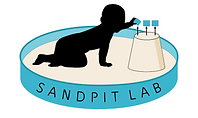top of page
Children with Autism Spectrum Condition are characterised by difficulties with social communication together with restricted and repetitive behaviours. Symptom profiles show striking variability which may be driven, in part, by co-occurrence with other neurodevelopmental conditions, such as attention deficit/hyperactivity disorder (ADHD), Callous Unemotional (CU) traits and anxiety. Our research takes a developmental perspective, using quantitative modelling to delineate the pathways involved in comorbidity. Characterising symptoms and their overlap as they emerge is important for teasing apart different theoretical models of comorbidity, and in the longer-term, for informing more targeted intervention strategies.

The PACS project, conducted at the Bath Babylab, explores why young children behave and think differently from one another. Our research aims to characterise profiles of attention and cognition in pre-schoolers. When children reach three-to-five-years-of-age, traits and behaviours associated with developmental conditions, such as autism and attention-deficit/hyperactivity disorder, first become measurable. We are interested in characterising the early cognitive profile associated with these traits.


PACS

The Mapping Profiles of Cognition, Motivation and Attention in Childhood (C-MAPS) project aims to investigate whether children’s social abilities, motivation and attention underpin differences in how they interact with other people. In particular we are interested in whether individual differences in these constructs of attention and social motivation are linked to emotion recognition difficulties in children with Callous Unemotional traits and traits of Autism Spectrum Condition.
C-MAPS
King's Prize Fellowship
Biomarker Index for Autism Spectrum Condition: A transdiagnostic approach
The aim of this project is to construct a biomarker index, which combines multiple neurocognitive markers, and to test its sensitivity and specificity to Autism Spectrum Condition as compared to other co-occurring conditions.
Collaborative Projects
King's PF
Henry WF
Sir Henry Wellcome Postdoctoral Fellowship
A cross syndrome approach to atypical development
This aim of this project was to test the hypothesis that overlap in symptomatology between ASC, attention-deficit/hyperactivity disorder (ADHD) and Callous Unemotional (CU) traits can arise from both common and distinct infant trajectories.
Collaborative Projects
Other Collaborative Projects
Other CP

bottom of page

